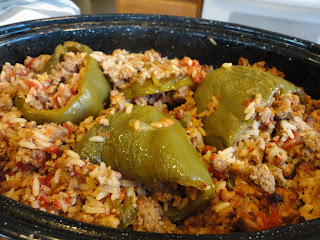The Rules of Civility
by Amor Towles
When Rules of Civility
appeared on several “Notable Books of 2011” lists, I thought I’d check it out. It turned out to be, if not the best, perhaps the most enjoyable read for me that year. I hesitate to say “best” because that
is quite a superlative comment for
a book to live up to which may
leave other readers disappointed, but I can at least say how I felt while reading it.
Pure pleasure, in the story, the setting, the characters,
the witty dialogue and that feeling of being transported totally to a different
time (1938) and place (New York City).
Each time I opened the book I was totally there. I found the language so fresh that
although I listened to the book the first time around, I justified that I had
to buy the hard copy so I could re-read the numerous examples of figurative
language—actually see it in print. In other words, a keeper on the bookshelf.
Now before I go into detail about why Rules of Civility was so enjoyable, I must admit not all the
readers were as enamored with the novel as I was. When reviewing a book, I try not to read other reviews to
keep my thoughts original and true, but sometimes it’s hard not to take a peek.
Okay, I peeked on this one and sort of wished I hadn’t because I was shocked to
read things like, “...the characters stopped developing, the action lagged, and
then the story ended abruptly.” Like
someone criticizing your child, I felt I had to come to this book’s defense
immediately.
The story opens New Year’s Eve, 1937, where 25-year old
Katey Kontent and her boarding house roommate, Eve, begin their evening
celebration. They start at a Greenwich Village jazz bar trying to stretch $3.00
between them as far as it will go with one martini an hour, planning to wind up
at a Ukrainian diner at dawn with a 15- cent breakfast of coffee, eggs and
toast. Katey and Eve flirt with
shameless savoir-faire and are so clever with the quick repartees. For example, “On Friday
nights they let boys they had no intention of kissing buy them drinks and in
exchange for dinner they kissed a few who they had no intention of kissing
twice.”
But on that New Year’s Eve, when an elegant moneyed banker
named Tinker Grey walks into the jazz bar, it changes all their lives forever. Katey is immediately smitten, “You could just picture his forebear at the
helm of the Mayflower with a gaze trained brightly on the horizon and hair a
little curly from the sea salt air.”
But Eve calls, “Dibs”, first. Although we follow this threesome
throughout the year 1938, the story is mainly Katey’s as she rises from a Wall
Street secretarial pool to the upper echelons of New York Society.
Katey, a bookworm, is the daughter of Russian immigrants
from Brooklyn (where she was known as Katya) and Eve, a blonde, corn-fed
beauty, hails from midwest Indiana.
She’s the daughter of a wealthy businessman, although she refuses any
financial support from him, wanting to “make it” on her own. Katey has been compared to other notable characters in literature,
such as Holly Golightly in Breakfast at
Tiffany’s and Nick Carraway in the Great
Gatsby. Perhaps some of you
remember Rona Jaffe’s The Best of
Everything, described as an
expose of the lives and loves of Madison Avenue working girls. If you are too young for that one,
think Mad Men, but in a much more
genteel and innocent fashion. (This is the 30’s not the 60’s). One review said
it was also reminiscent of Wolfe’s Bonfire
of the Vanities because it captured different aspects of the city at a
specific time.
There is no question The City itself plays a huge role in
the story. According to one reader,
“If a novel could win an award for best cinematography, this would take home
the gold. It is a retro-era novel
of manners, capturing Manhattan 1938 with lucid clarity and a silvery focus on
the gin, the jazz, the nightclubs and the streets.” One of my favorite descriptions was traveling by cab with
Katey, “... watching Broadway slipping by
the windows like a string of lights being pulled off a Christmas tree”. Or “... seeing limousines idling in front of the 21 Club, smoke spiraling
from their tailpipes like genies from a bottle.”
One critic of the book says the plot relies too much on co-incidences,
as if only 438 people lived in New York—always running into the right person at
the most opportune moment. I never
felt it was contrived but perhaps I was too star-struck with all the name-dropping...Bergdorf’s,
Cole Porter, The Ritz. After reading author Towles’ bio, I could see where he
believes in co-incidence as he personally, on his first night in the city many
years ago, met two strangers—one who would become his brother-in-law and the
other who would help him find a job he worked at for 20 years. A Yale and Stanford educated investment
executive turned novelist (this is his debut novel), I was quite impressed that
as a mature male he was able to define the world so clearly through the eyes of
a 25-year old girl trying to re-invent herself in the city.
We meet Katey again 30 years later and a critical question
resurfaces: “Are the behavioral rules that define civility simply a mask that
people wear to conceal their true natures or are the rules themselves important
and the motivation for following them irrelevant? “
For a novel that seems to be full of glitz and glamour, it’s
a heady question, which brings us to the title: The Young George
Washington’s Rules of Civility and Decent Behavior in Company and Conversation. The bonus appendix contains all 110
rules, ranging from simple Emily Post etiquette such as, ”Drink not nor talk
with your mouth full” to the esoteric “Labour to keep alive in your breast that
little spark of celestial fire called Conscience.” Tinker’s
conscience is at the heart of his relationship with Katey and its outcome.
I loved spending a year and 335 pages with heroine Katey
Kontent in the City. I hope you do
too.




